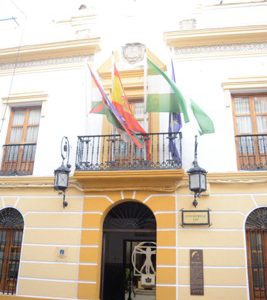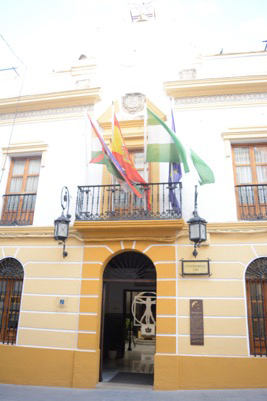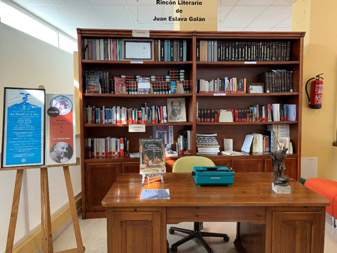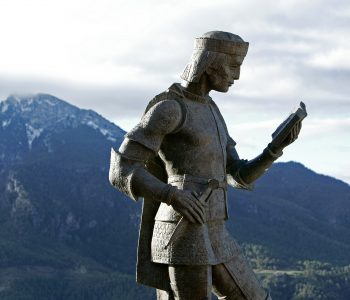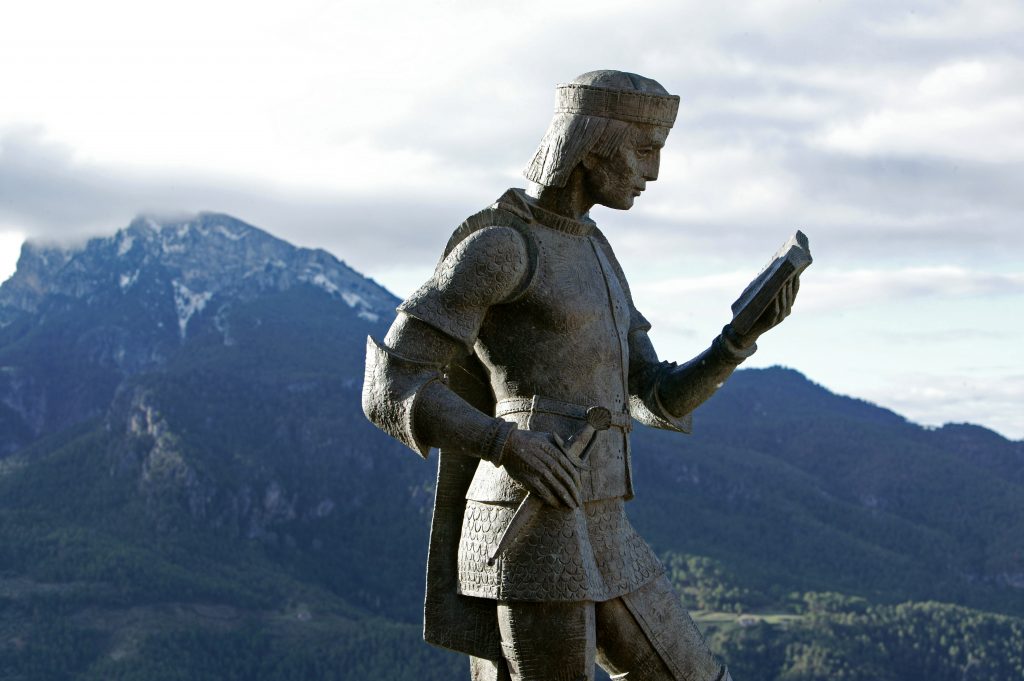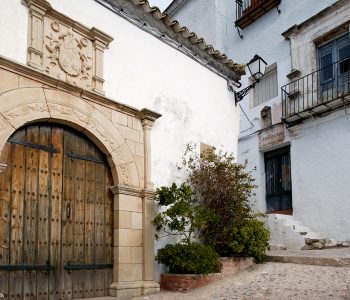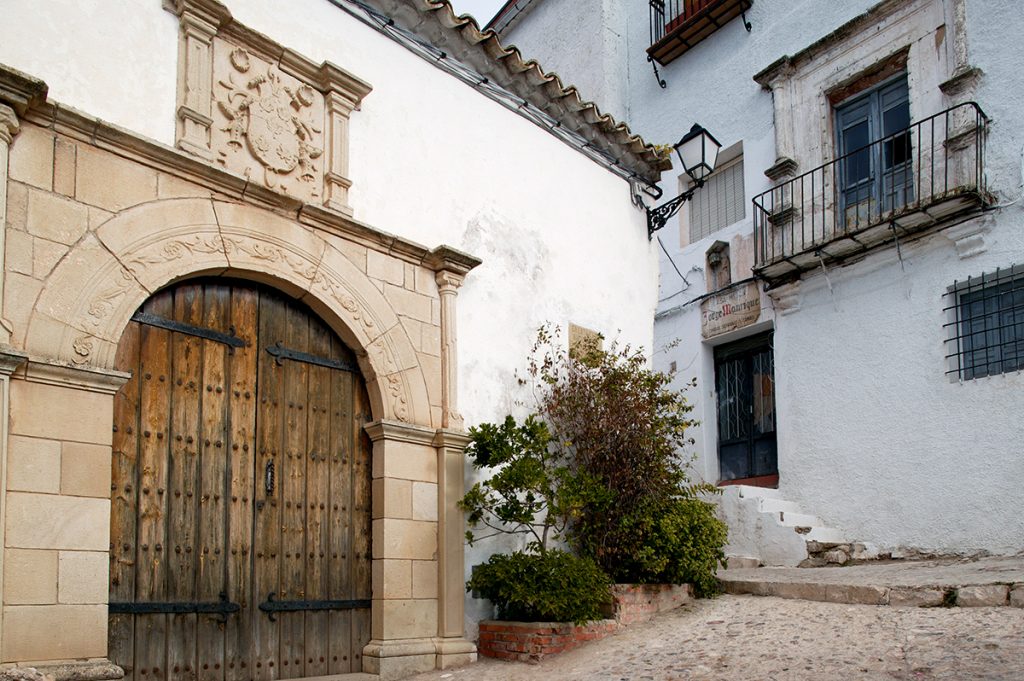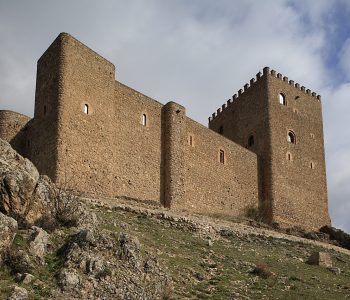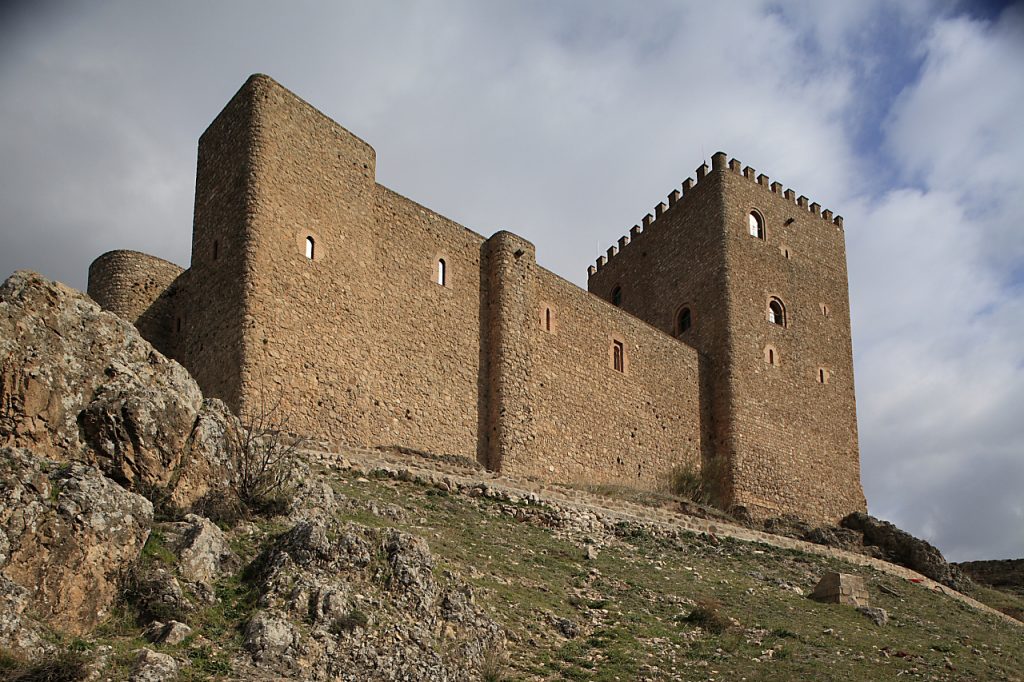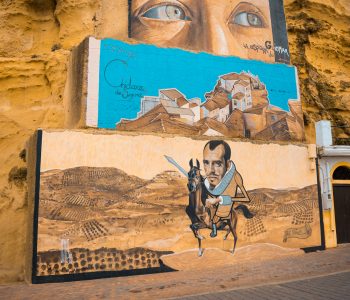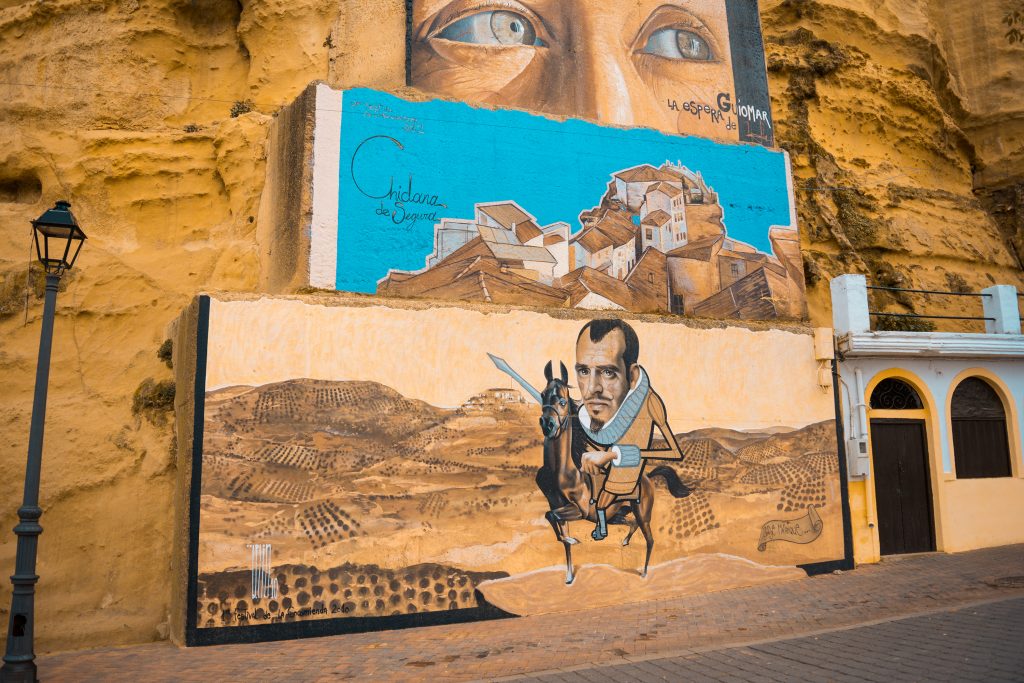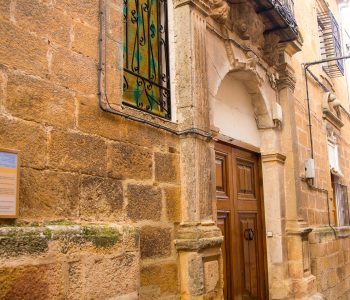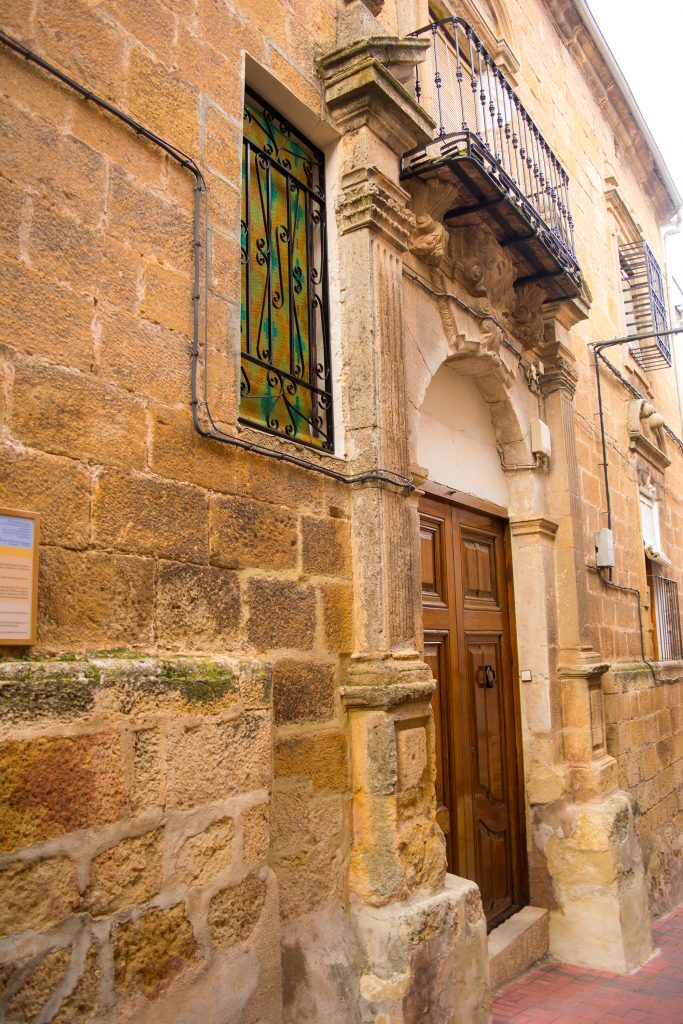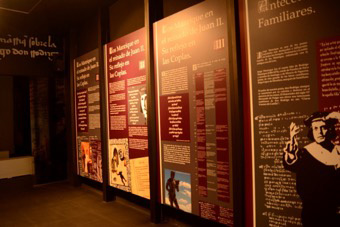
Crypt of Baron of Velasco

This family funerary crypt, neo-Byzantine style, was built by order of Fernando Ruano Prieto, Baron of Velasco, under the patronal Chapel of his family in the Church of Saint John. The design, by architect Antonio Flórez Urdapilleta, highlights its resplendent golden tesserae, the apse presided over by a Pantocrator, surrounded by four cherubs and three statues sculpted in Carrara marble by the Valencian José Capuz, representing the Theological Virtues (Faith, Hope and Charity).
The most unique thing is its ingenious movement mechanism through rails to access the mortuary niches. These were hidden behind the statues and were activated when someone had to be buried. This is the space that Juan Eslava Galán had chosen to hide the Templar Tombstone in his work, which in fiction he calls the Crypt of Baron of Velillos. The author also recreates the damage undergone during the Spanish Civil War.
(…) They entered a narrow room. To the right began a monumental flight of descending staircase, made of Carrara marble, badly destroyed and full of rubble. They descended with the flashlights on. The staircase described half a circumference and ended in a tiny underground room in the shape of a Greek cross. One side of the cross was occupied by a small altar so thoroughly smashed it was almost unrecognizable. They focused the flashlights at the ground. In the center, three monumental Carrara marble sculptures, two meters high, were piled up, one on top of the other, impeding the passage (…)
